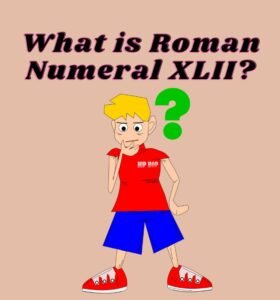Roman Numerals 21 to 40: Roman numerals are an ancient numerical system that dates back to the Roman Empire. Although they are not commonly used in modern arithmetic, they still have significance in various applications, such as numbering chapters in books, indicating monarchs’ names, and even clock faces. In this article, we will explore Roman numerals 21 to 40, understand the rules behind their construction, and provide examples to facilitate comprehension.
Roman Numerals 21 to 40 Chart Download

Number to Roman Numerals Converter
Roman Numerals to Number Converter
Roman Numerals 21 to 40 Chart
Let’s explore Roman Numerals 21 to 40 in a detailed table, covering essential aspects of this numeric system:
| Number | Roman Numeral |
|---|---|
| 21 | XXI |
| 22 | XXII |
| 23 | XXIII |
| 24 | XXIV |
| 25 | XXV |
| 26 | XXVI |
| 27 | XXVII |
| 28 | XXVIII |
| 29 | XXIX |
| 30 | XXX |
| 31 | XXXI |
| 32 | XXXII |
| 33 | XXXIII |
| 34 | XXXIV |
| 35 | XXXV |
| 36 | XXXVI |
| 37 | XXXVII |
| 38 | XXXVIII |
| 39 | XXXIX |
| 40 | XL |
Roman Numerals 1 to 100 – Click Here
Roman Numerals 21 to 40
Continuing our exploration, let’s examine Roman numerals from 31 to 40:
XXI – 21
XXI is a combination of X (10) and I (1), representing 21.
XXII – 22
XXII is derived from X (10) and II (2), signifying 22.
XXIII – 23
XXIII stands for 23, with X (10) and III (3) combined.
XXIV – 24
XXIV equals 24, formed by combining X (10) and IV (4).
XXV – 25
XXV is the Roman numeral for 25, resulting from X (10) and V (5).
XXVI – 26
XXVI denotes 26, created by combining X (10) and VI (6).
XXVII – 27
XXVII represents 27, with X (10) and VII (7) combined.
XXVIII – 28
XXVIII stands for 28, formed by combining X (10) and VIII (8).
XXIX – 29
XXIX is the Roman numeral for 29, resulting from X (10) and IX (9).
XXX – 30
XXX denotes 30, created solely from three Xs (10 + 10 + 10).
XXXI – 31
XXXI represents 31, formed by combining XXX (30) and I (1).
XXXII – 32
XXXII stands for 32, with XXX (30) and II (2) combined.
XXXIII – 33
XXXIII denotes 33, created by combining XXX (30) and III (3).
XXXIV – 34
XXXIV is the Roman numeral for 34, resulting from XXX (30) and IV (4).
XXXV – 35
XXXV represents 35, formed by combining XXX (30) and V (5).
XXXVI – 36
XXXVI denotes 36, created by combining XXX (30) and VI (6).
XXXVII – 37
XXXVII stands for 37, with XXX (30) and VII (7) combined.
XXXVIII – 38
XXXVIII represents 38, formed by combining XXX (30) and VIII (8).
XXXIX – 39
XXXIX is the Roman numeral for 39, resulting from XXX (30) and IX (9).
XL – 40
Finally, XL stands for 40, representing a single L (50) subtracted from X (10).
FAQs
Are Roman numerals still used today?
Yes, Roman numerals are still used in specific applications, such as naming monarchs, numbering chapters, and indicating significant events.
How do you represent zero in Roman numerals?
Roman numerals do not have a symbol for zero; they start from I (1) and go onwards.
What is the significance of Roman numerals in clock faces?
Roman numerals are often used in clock faces due to their elegant and traditional appearance, adding a touch of classic style to timepieces.
Where can I find Roman Numerals in everyday life?
Roman Numerals can be found in clocks, watches, movie titles, legal documents, and various decorative accents.





